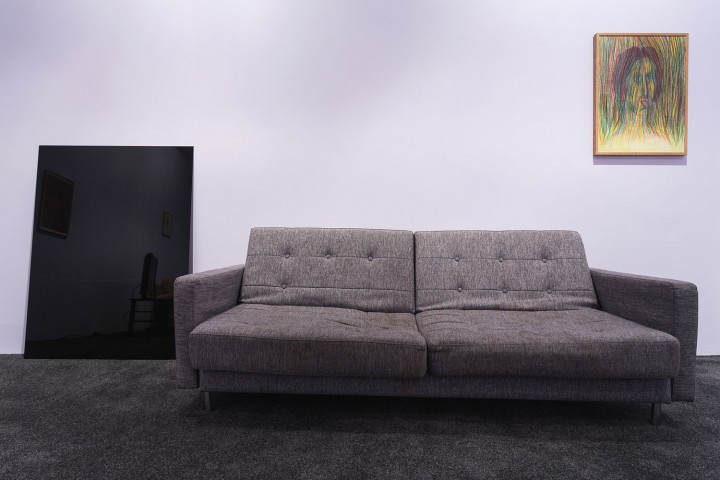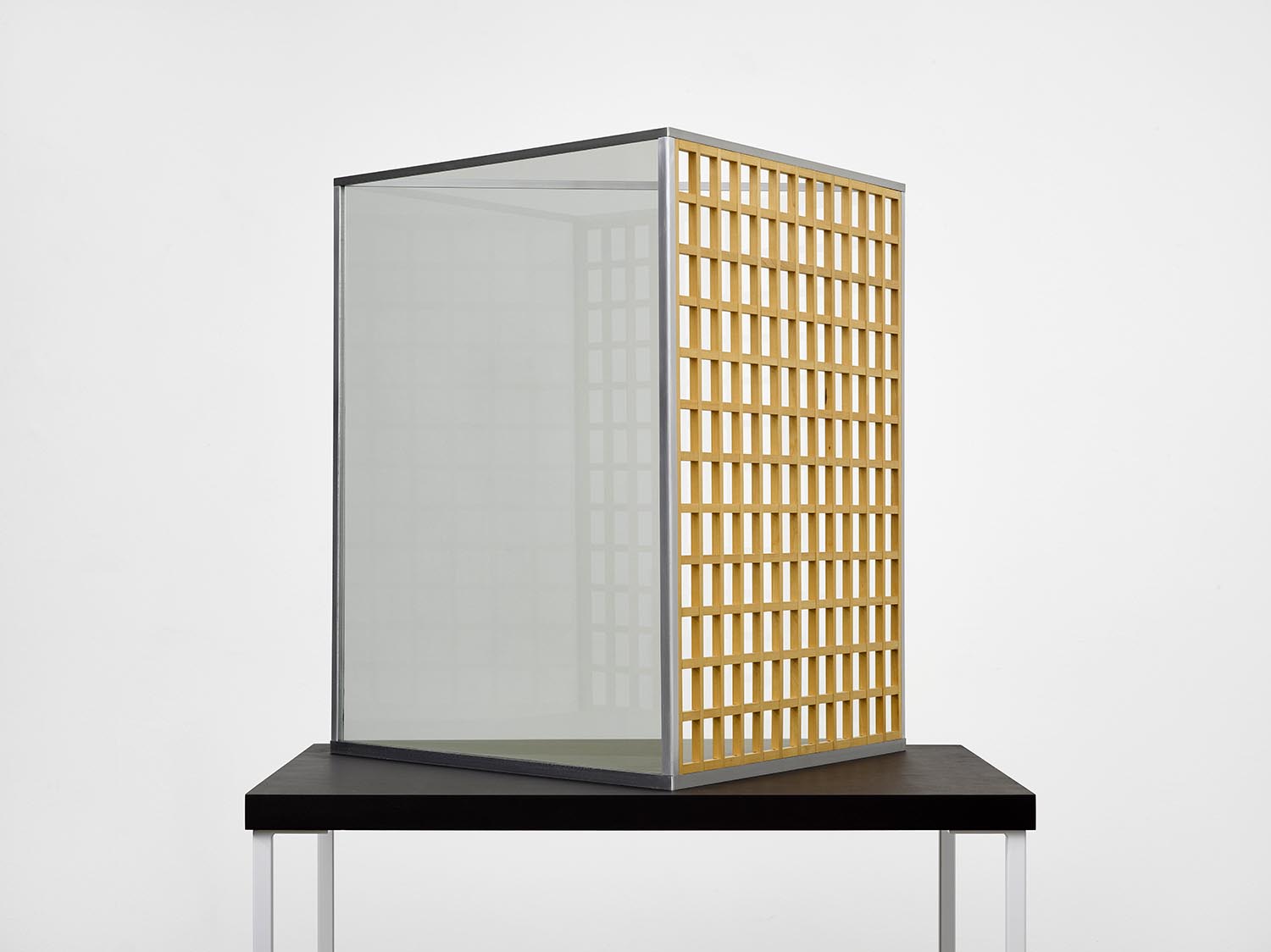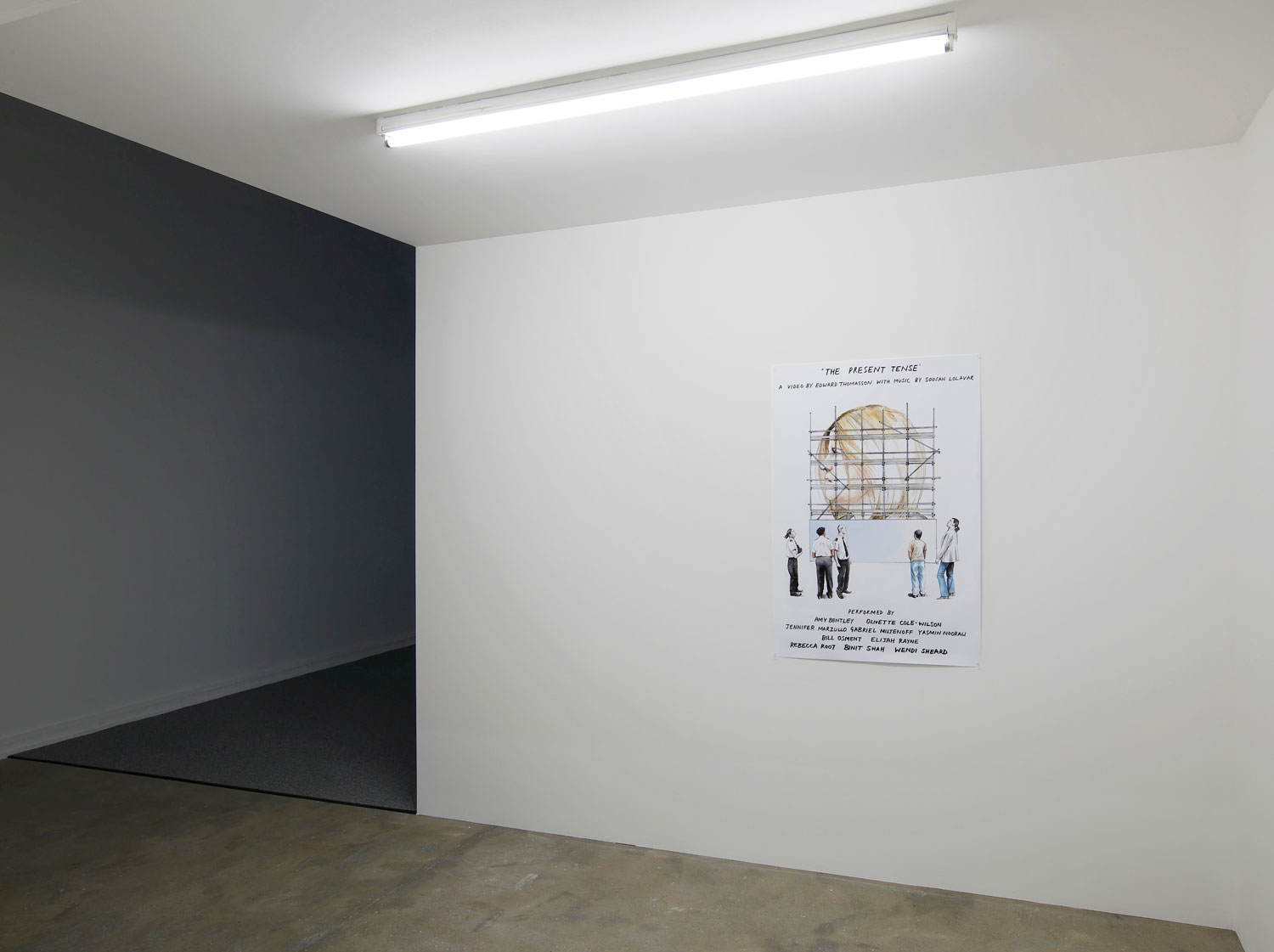At the turn of the 20th century, when the house was still the principal stage for social relationships, home economics was considered a critical pathway to higher education for women; the field was multidisciplinary and integrative, with an emphasis on science applied to the real world of the home, families and communities.
One hundred years later, aspects of domesticity and its productive and social networks have breached the white cube. Skyrocketing real estate prices, displacement and nomadic lifestyles have brought the house and its representation to the forefront of contemporary visual art. “Our House in the Middle of Your Street,” organized by Life Gallery at 6A Minerva Street, the contingent annex space of Vilma Gold Gallery in London, is a grouping of five international artists.
The press release narrates how Life Gallery, a nomadic project itself, originated during an informal domestic moment between writer and curator Harry Burke and artist Oscar Khan. Gray carpeting — quintessentially British — covers the gallery floor. Three sofas are casually positioned near a PlayStation console with games available for public play. Hypochondriac (2014) and Envy (2014), soft, stuffed animals by artist Ann Hirsch, sit alone, evoking student housing and friendships developed in front of screens. Near the entrance, Holly White’s About going away/ being away/ the past/ the future, thinking what will we do if we have to leave london (2015) is an assemblage of images, materials and packaging that fictionally hints at the inhabitants of this environment. On the opposite side, Anne Imhof’s Horizont V (2014), a black, reflective etching, appears to be in transit, awaiting final placement.
Colorful abstract paintings — Vittorio Brodmann’s not yet titled (2014) and Manuela Gernedel’s Waterfall (2014) — decorate the walls amid works on paper of varying sizes. Works are confined to the periphery of the gallery, transforming it into a social space in which a relational program of events by artists unfolds over the duration of the show. Within this context, domestic space, intended as a materialization of personal networks and a site for spontaneous creativity, becomes autonomous. The show proposes new ways of understanding exhibitions as constructive social moments, and galleries as active sites for free artistic production, discussion and experimentation.



